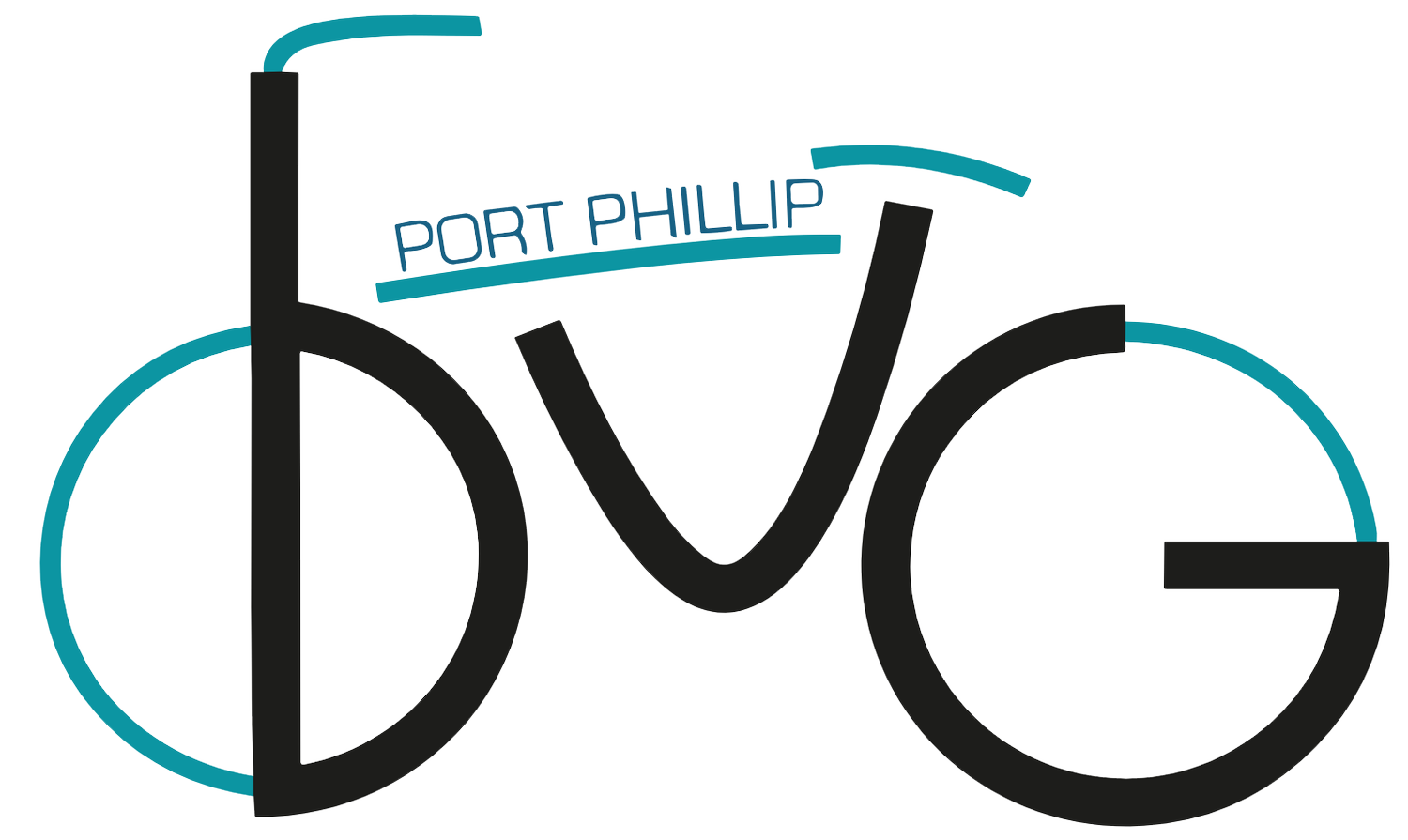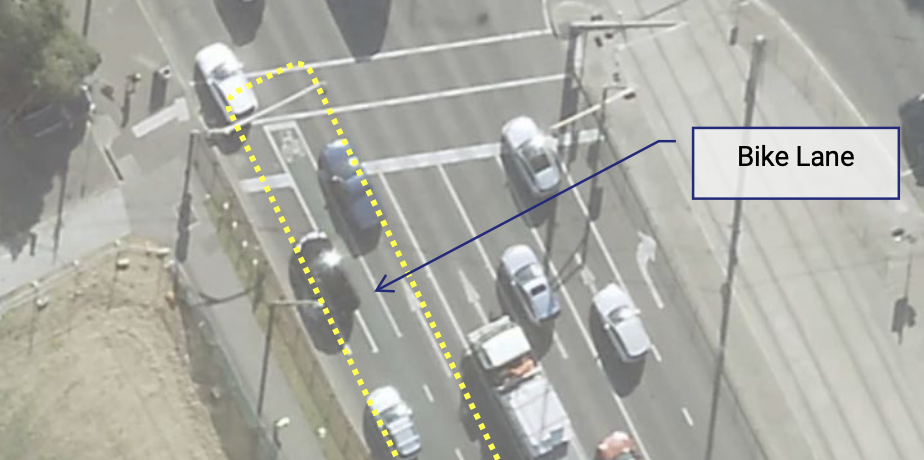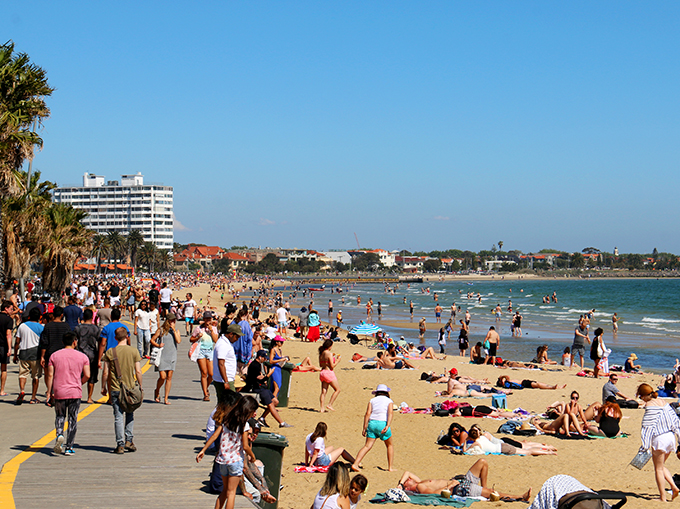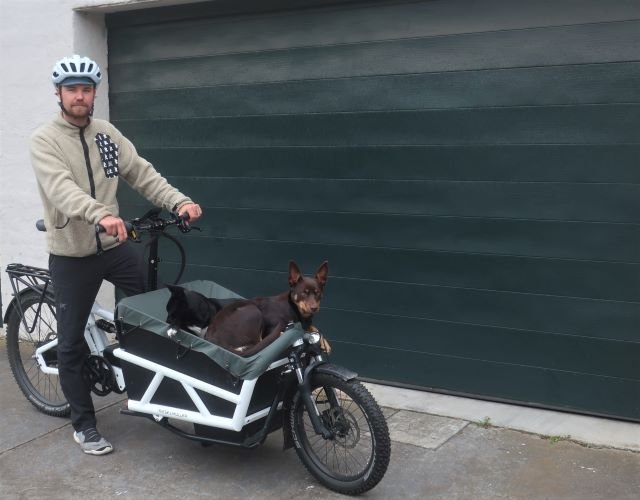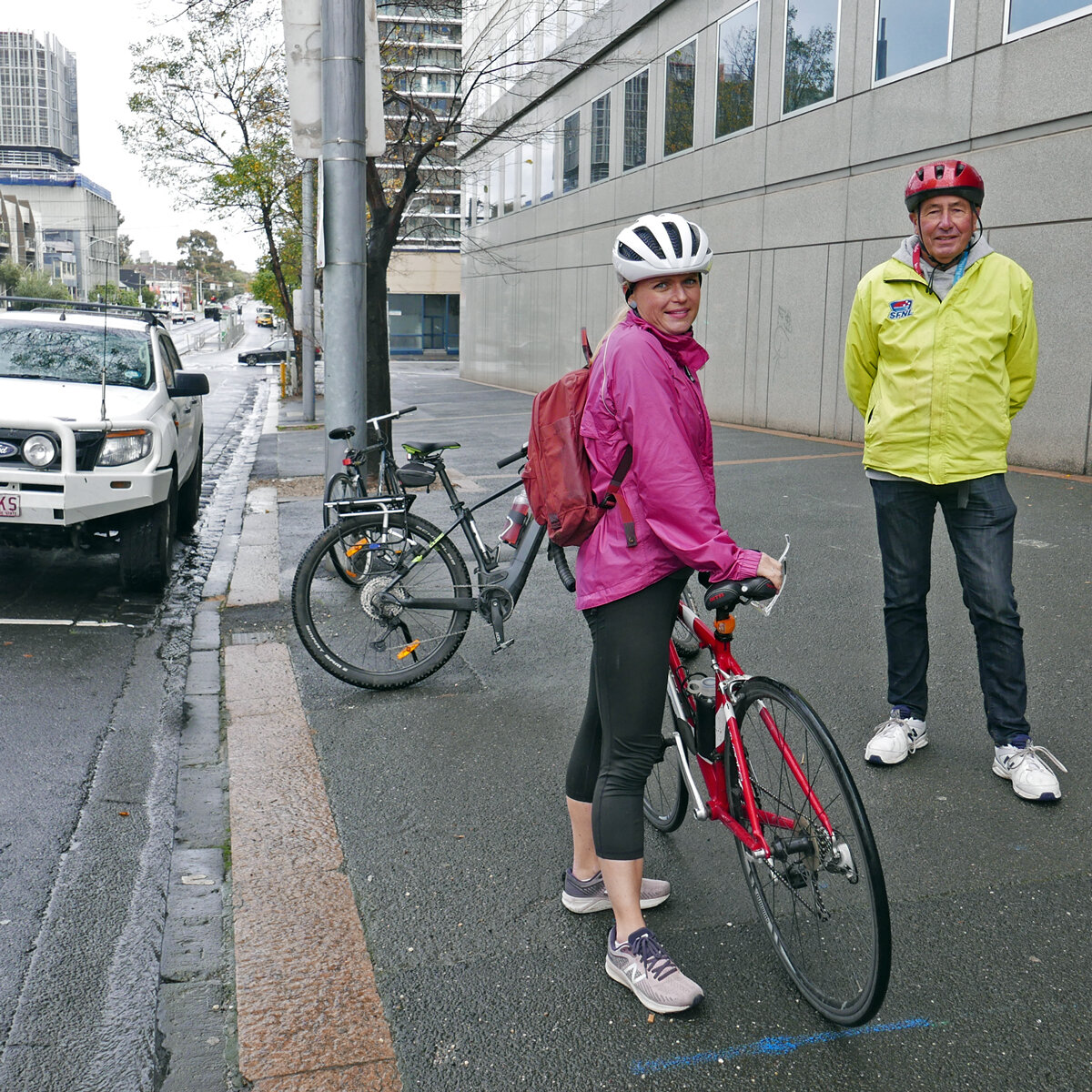Summary: A so-called independent report claims to find that the pop-up trial of bike infrastructure is dangerous and should be removed. It is a privately commissioned piece of political advocacy that is neither transparent nor comprehensive, contains egregious errors throughout, and offers opinions not based on actual data or best practice knowledge. We stand by our call for the trial to run to completion, with a comprehensive data-driven review before deciding whether to keep or remove the changes.
Update: Since writing this article, some of our questions about the Traffix Report have been (partly) answered by PS Media article 25 November. So we suggest reading this first: https://news.psmedia.com.au/port-phillip/news/articles/2511-pop-up-bike-lane/
While the range of infrastructure implemented across 38 km of city streets is a bit of a mixed bag, our user experience survey and consultation identified no immediate safety issues [1]. We look forward to a full and proper review based on robust data at the end of the trial period.
RoPP-Traffix Report
The following is our review of the ‘Port Phillip ‘Pop-up’ Bike Lane Infrastructure Independent Transport Review’ by Traffix Group consultants, dated 27 October 2022 from the Ratepayers of Port Phillip (RoPP) Facebook page.
The Traffix report is partisan, not independent
The so-called "independent" Traffix report does not meet basic criteria for independent expert reports, such as the requirements listed in VCAT Practice Note for Expert Evidence.
The commissioning of the report lacks transparency and accountability. The report does not clearly state its funding sources, aims, methods, limitations, and assumptions. The Traffix report reviews only a small number of isolated sites within the 38 km pop-up trial and so can hardly be considered a comprehensive assessment. Yet, this does not stop the conclusion making sweeping recommendations about "the vast majority of the pop-up bike lane infrastructure.”
The consultant and client have worked together to form a closed feedback loop. An example of this can be seen in the Traffix report citing "community reporting" of "confused motorists" as a significant safety issue, which is then promoted by the RoPP spokesperson on their website and to the Nine media to claim an "independent" report has raised significant issues for motorists.
We conclude that Traffix are acting as an advocate for the political lobby group RoPP and that it is misleading to refer to their report as “independent”.
Misinformation Campaigns
If the RoPP political group had commissioned the report to address genuine safety concerns, they would have submitted it to the local and state governments for immediate action, instead of promoting it to the media.
Like other conspiracies cooked up on facebook groups, it is alarming that real community safety issues are being deliberately misrepresented for political gain. For example, the "independent" Traffix report has been used by RoPP to try and wedge candidates for the state government election, refer to RoPP reporting on Albert Park candidates forum.
Safe cycling infrastructure
Central to all of the Traffix report's key findings and recommendations, is the fallacious opinion that "conventional" bike lane infrastructure (paint) is safer than physical separation. This opinion is directly contradicted by evidence from extensive research in Australia and internationally, such as:
· The Conversation: 3 in 4 people want to ride a bike but are put off by lack of safe lanes
· Separated bike lanes means safer for all users of the road: 13 year study across a dozen cities
At Park Street, for example, Traffix consultants tie themselves in knots on this issue: acknowledging the new separated lanes are a clear safety improvement, yet also recommending extensive modifications to convert them to “conventional” painted lanes.
The Traffix report recommends this as best practice….
Traffix also makes an overly big deal about conflicts with left-turning lanes at the newly separated intersections on Marine Parade and Park Street, even though these conflict points now occur at much lower speeds. Traffix asserts that minor concerns like this make the entire separated trial unsafe for motorists and cyclists: this is not just over-egging the issue, it is directly contradicted by the extensive research cited above.
We strongly support the retention of the Park Street pop-up separated bike lanes. We love the new St Kilda Road separated bicycle lanes and we look forward to the Kerferd Road separated lanes being implemented as part of the Shrine to the Sea project.
Traffic Congestion
The Traffix report does not find that the pop-up trial exacerbates traffic congestion, despite this being claimed by a RoPP spokesperson on their website. To be clear, the report does not make any findings or recommendations on the issue of traffic congestion and for RoPP to claim otherwise is blatant misinformation.
Motorist Safety
The report’s conclusion claims that the overall trial offers "an increased risk to road users" including “motorists”, yet evidence in the report in support of this for this bold claim is scant.
The report's review of separated bicycle infrastructure greatly exaggerates the increased risk of conflict between bicycles and cars, as noted above for Marine Parade and Park Street.
The report erroneously does not identify the asymmetric nature of conflicts between bicycles and cars, with the person riding the bike obviously much more at risk than the driver and occupants of the vehicle. Deliberately conflating the two risks as being equivalent is a misrepresentation of road safety issues.
The "community reports" of "confused" motorists driving on new separated bicycle lanes in Marine Parade is most likely a teething issue associated with the introduction of new infrastructure. There is no data supporting Traffix’s claim that the bicycle lanes pose any continuing safety risk to motorists. There is also evidence that the risk to cyclists is far greater for painted bicycle lanes than for separated lanes.
The report only identifies one isolated instance of increased risk to motorists, which relates to the circumstances at Deakin Street in St Kilda West. In this case, the report identifies some simple ways to mitigate the increased risk, namely adding a painted centreline and road narrowing warnings. However, the report fails to mention these safety solutions, or any others, in its findings and recommendations. This is an extraordinary omission for a "safety" report! Given Deakin Street's wide pavements, low traffic speed and low traffic volumes, there are many simple safety solutions that could work well for all road users in this space.
Who is cycling infrastructure for?
Traffix's strong preference for painted bike lanes reflects outdated engineering assumptions that all cyclists are fit, adult males in lycra. As per the research cited in The Conversation, 3 in 4 people want safe cycling routes, which particularly for women, means separated cycling infrastructure.
There is community demand for safe cycling routes that better suit a wider demographic: parents doing the childcare drop-off on the way to work, kids cycling to school, families going to the beach, and seniors who like getting around by bike 'cos it's easier on the old knees' than walking.
Marine Parade
Marine Parade is a central part of one of Melbourne's most popular and iconic on-road cycling routes. The road has well-known safety issues, including at the intersections targeted by the pop-up trial. We therefore disagree with Traffix's recommendation that targeting safety improvements at these notorious intersections is not worthwhile. As with the rest of the trial, we look forward to a complete review being made at the end of the 12-18 months period when more data is available.
Apart from intersections, we note the other significant safety issue for cycling on Marine Parade is the lane interruptions by on-street parking, such as at Donovan's restaurant and at Catani Gardens. We would welcome RoPP making a positive intervention to address these issues, rather than the crocodile tears on display here.
Get off the Road!
For the section of Marine Parade between Fitzroy Street and Glen Huntly Road, Traffix claims that the ‘pop-up’ bicycle lanes on Marine Parade “are in locations where there is already an existing two- way off-road bicycle path that runs parallel to Marine Parade adjacent to the western side of the road. This path is fully separated from traffic.” (As an aside: professional traffic engineers ought to know the difference between a shared user path and a bicycle path).
Apart from the middle third, this statement is incorrect for the majority of this 2.2km section, because:
a. in the southern section, from Dickens St to Glenhuntly Rd, the off-road path detours through the marina car park – where it is a shared path with pedestrians – and then makes a long detour around Moran Reserve and Point Ormond. There is no direct connection to Glenhuntly Road from the Bay Trail.
b. in the 850m long northern section, from Shakespeare Grove to Fitzroy St, there is no two-way off-road bicycle path at all. The popular St Kilda foreshore promenade is a shared cyclist-pedestrian space. This section is a high accident zone between pedestrians, cyclists and scooters. At its busier times, the crowded promenade is not a safe place for riding bicycles or scooters.
This is what Traffix and RoPP call an “off-road bicycle path”
Traffix’s recommendations that no safety improvements for cycling infrastructure is required for Marine Parade appears to be based on their false belief in a safe and equivalent off-road route. This incorrect assumption is repeated by RoPP on their website: “The report also notes an existing bike path completely separated from Marine Parade traffic has already been in place for many years, raising questions about why new infrastructure is needed.”
In summary, both RoPP and Traffix recognise that the popular Marine Parade cycling routes are unsafe. However, they do not recommend any safety improvements because cyclists should just get off the road!
Visual Amenity
Making "visual amenity" a key recommendation in a "transport safety review” is highly unusual but reflects the RoPP tactic of conflating “amenity” with “safety” issues. Why else would "independent" transport engineers be so troubled by orange paint, which is the standard colour for temporary road works? “Visually uncluttered” places like St Kilda Junction are paradise to traffic engineers but deadly to cyclists!
While we agree that permanent garden beds are preferable to temporary concrete blocks, and white paint is preferable to temporary orange paint, we are quite happy to wait until an independent safety review at the end of the 12-to-18-month trial for any final decisions to be made.
Pedestrian Safety
We welcome the Traffix report's findings that the pop-up trial improves pedestrian safety at many intersections. However, we completely disagree with the recommendations that pedestrian safety improvements are "irrelevant" and should be removed. We recognise that pedestrians are the most vulnerable users of public spaces and must be considered as a priority in all decisions around road safety.
Incremental safety improvements
Despite finding that some trial interventions have overall safety benefits, Traffix still recommend their removal because "not every intersection has that treatment". This is illogical.
Speed Humps
We support the introduction of speed humps to reduce vehicle speeds in residential streets, as they can improve safety and amenity for the entire community. We note some fine-tuning of placement and design may be necessary in a few places, particularly to avoid vehicles swerving around the speed humps.
Sharrows
Painted sharrows offer little safety benefits to cyclists, but we are happy for the permanent status of this paintwork to be reviewed at the end of the trial.
Wasteful Governance
The RoPP group claim to support fiscal responsibility, yet in practice are promoting the wasteful removal of temporary infrastructure based on flawed reasoning and incomplete data.
Inherent Limitations of the Pop-Up Trial
Given the narrow parameters of the pop-up trial roll-out – doing what is quick and easy, rather than what is necessary – we note that wider safety issues have not been addressed in the trial. For example, in some targeted locations, removing or relocating on-street parking spaces would greatly improve safety much more than the pop-up installations.
[1] We note that members of BUG have since documented concerning incidents on Westbury St that should be investigated as soon as possible. The information has been passed on to the DoT Pop-up Trial team for action.
